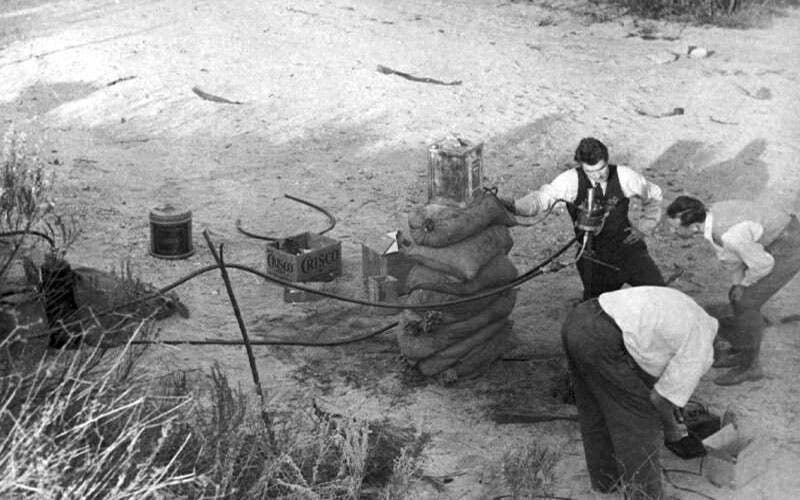Scientist of the Day - Jack Parsons
Jack Whiteside Parsons, an American rocketeer, was born Oct. 2, 1914. On Oct. 31, 1936, Parsons teamed up with Frank Malina, a Caltech graduate student, and three others to successfully ignite a small solid-fuel rocket in an isolated area of Pasadena known as Arroyo Seco. Malina was a graduate student at Caltech, but Parsons had only a high-school education. Still, his passion for rockets had convinced Theodore von Kármán to put him in touch with his student Malina. It turned out that Parsons was a rocket genius. He helped invent not only the solid-fuel rocket, but he was also a pioneer developer of JATO technology, which uses baby rockets hung under a plane's wing to provide Jet-Assisted Take-Offs. Parsons went on to co-found Jet Propulsion Laboratory (JPL), the government-funded agency at Caltech that has run most of our space programs. Indeed, in much of their promotional literature, modern-day JPL traces its origins to that Halloween-day rocket firing of 1936. Parsons also co-founded Aerojet Corporation, which initially made JATO rockets and then moved into space rockets.
All this sounds quite impressive, so why have we heard so much about Werner von Braun and Robert Goddard and so little about Parsons? Mainly because, in addition to being brilliant, Parsons was a genuine occultist wacko. Parsons became a follower of “the wickedest man in the world,�” Aleister Crowley, and his magical order, the Ordo Templi Orientis (Order of the Temple of the East or OTO). In 1942, when his rocket career was peaking, Parsons became the leader of the Pasadena lodge of the OTO. Parsons supposedly would recite odes to Pan when launching rockets, which brings to mind (to my mind, anyway) William Blake’s engraving of The Fertilization of Egypt.
Parsons was let go from both JPL and Aerojet in 1944, because of his OTO activities. He took his wife’s sister for a mistress; his wife then left him for none other than L. Ron Hubbard, a lodge member who would soon found the Church of Scientology. Fritz Zwicky, an astronomer at Caltech (and the discoverer of neutron stars), would have nothing to do with Parsons, whom he regarded as not just crazy, but dangerous. And in a sense, Parsons was dangerous, since he blew himself up in his home laboratory in 1952, at the age of 37, apparently unintentionally. Because of his stranger-than-fiction lifestyle, Parsons has been the subject of numerous books and plays, one of the latest being "Jet Propulsion," a four-actor play by Peter Bakely that was performed here at the Kansas City Fringe Festival in the summer of 2011. Surprisingly, no feature film has ever been made, based on Parsons’ life. Someone should do this. They could call it: The Wrong Stuff.
There is a short (3-minute) CBS video that has a few factual errors but is worth watching because of the many good photos of Parsons and his cohorts. You can access it here.
Dr. William B. Ashworth, Jr., Consultant for the History of Science, Linda Hall Library and Associate Professor emeritus, Department of History, University of Missouri-Kansas City. Comments or corrections are welcome; please direct to ashworthw@umkc.edu.







